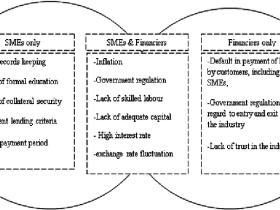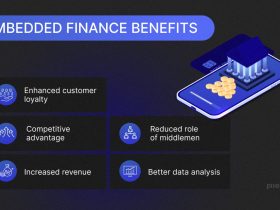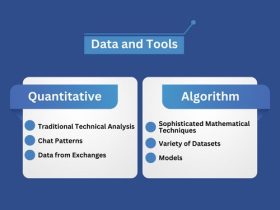Predictive analytics tools have undergone significant evolution, rendering them increasingly indispensable for businesses. In this overview, we’ll examine 5 leading tools for 2024. However, before diving into specifics, it’s crucial to understand the transformative shifts in these tools and key considerations for selecting the most suitable one for your needs.
Source: quytech.com
What is predictive analysis?
Predictive analytics, a complementary field focused on projecting future events by scrutinizing patterns and trends in historical and current data, has traditionally been the domain of a limited cadre of data analysts or scientists. Crafting predictive models entailed a laborious process of weeks or months, involving experimentation with diverse datasets, exploration of various hypotheses, and validation of numerous prototypes to uncover a valuable model.
However, this landscape is rapidly changing, owing to significant advancements in tools catering to both data analytics specialists and everyday business users. Carlie Idoine, Research Director at Gartner, notes this transformation, emphasizing the expanding accessibility and usability of these tools.
The terminology surrounding tools for constructing predictive models has also undergone evolution. Presently, they are commonly referred to as data science and machine learning (ML) tools, utilized for developing a range of analytics and AI models spanning descriptive, diagnostic, predictive, and prescriptive analytics.
While predictive analytics is a fundamental component of these tools, users may not explicitly mention the term when applying predictive analytics to real-world scenarios. For instance, a sales manager might prioritize a more effective lead scoring algorithm, a marketing manager seeks to enhance click-through rates, and the finance team aims to mitigate fraud, all of which rely on predictive analytics without necessarily using the term itself.
How are Predictive tools beneficial?
1. Business Insights: Predictive analytics tools allow businesses to gain valuable insights into future trends, behaviors, and outcomes based on past and current data. This foresight enables proactive decision-making and strategy formulation, leading to a competitive edge in the market.
2. Efficiency: By automating the process of data analysis and model building, these tools streamline workflow and save time. What once took weeks or months can now be accomplished more rapidly, empowering organizations to respond swiftly to market dynamics and opportunities.
3. Accessibility: The evolution of predictive analytics tools has made them more accessible to a broader range of users, including business analysts and non-technical stakeholders. This democratization of analytics fosters collaboration across departments and ensures that insights are leveraged throughout the organization.
4. Customization: Modern predictive analytics tools offer a high degree of customization, allowing users to tailor models to their specific business needs and challenges. This flexibility ensures that the insights generated are relevant and actionable, driving tangible business outcomes.
5. Competitive Advantage: By harnessing the power of predictive analytics, businesses can anticipate customer needs, optimize operations, and mitigate risks effectively. This proactive approach not only enhances customer satisfaction but also positions the organization for long-term success in a dynamic marketplace.
Overall, predictive analytics tools play a pivotal role in helping businesses stay ahead of the curve, adapt to changing conditions, and thrive in an increasingly data-driven world.
Top 5 predictive analytics tools for 2024
NUMENTA:
Numenta is a company that focuses on neuroscience research and applies principles from neuroscience to develop machine learning algorithms. Their primary area of focus is on understanding and replicating the principles of the neocortex, the part of the brain responsible for higher-order functions such as sensory perception, spatial reasoning, and language.
While Numenta’s work is not typically categorized as a conventional predictive analytics tool, their research has implications for predictive modeling and anomaly detection. They have developed algorithms such as Hierarchical Temporal Memory (HTM), which mimics the hierarchical structure and temporal dynamics of the neocortex.
HTM and related algorithms have potential applications in predictive analytics, particularly in areas where data exhibit temporal dependencies and complex patterns. For example, they
could be used for time-series forecasting, anomaly detection in streaming data, and pattern recognition tasks.
However, it’s important to note that Numenta’s approach differs from traditional machine learning techniques, and their algorithms may require specialized expertise to implement and deploy effectively. While Numenta’s work shows promise, its adoption as a mainstream predictive analytics tool may depend on factors such as usability, scalability, and performance compared to existing approaches.
Linkedin: https://www.linkedin.com/company/numenta/
Website: https://www.numenta.com/
Industry: Software Development
Company size: 11-50 employees, 30 associated members
Founded: 2005
Specialties: Machine Intelligence, Anomaly Detection, Hierarchical Temporal Memory, Artificial Intelligence, Neuroscience, and HTM.
H₂O DRIVERLESS AI
H2O, a newcomer in the predictive analytics field, has gained momentum with its widely embraced open-source platform. Their flagship product, H2O Driverless AI, aims to streamline the development of AI and predictive analytics solutions for both seasoned professionals and novice data scientists. It achieves this through a blend of open-source resources and customized methodologies.
Noteworthy features of H2O Driverless AI include automated and enhanced functionalities for tasks such as feature engineering, model selection, parameter optimization, natural language processing, and semantic analysis. Additionally, the company provides a range of tools to facilitate the integration of explainability into predictive analytics models. These tools include causal graphs, local interpretable model-agnostic explanations, the Shapley value, and decision tree surrogate methods.
Linkedin: https://www.linkedin.com/products/h2oai-h2o-driverless-ai/
Website: https://h2o.ai/platform/ai-cloud/make/h2o-driverless-ai/
KENSHO
Kensho is a prominent name in the field of predictive analytics, particularly renowned for its innovative approach to applying artificial intelligence (AI) and machine learning (ML) techniques to financial markets and other complex systems. The company’s platform offers advanced analytics capabilities that leverage natural language processing (NLP), deep learning, and data analytics to extract insights from vast amounts of unstructured data.
Kensho’s solutions enable users to quickly analyze and understand the potential impact of real-world events, such as geopolitical developments, economic indicators, or natural disasters, on financial markets and other sectors. By automating the process of data analysis and generating actionable insights, Kensho empowers financial institutions, asset managers, and other organizations to make informed decisions and mitigate risks more effectively in dynamic and uncertain environments.
In addition to its applications in finance, Kensho’s predictive analytics technology has been applied to various other domains, including healthcare, defense, and energy, highlighting its versatility and potential for driving innovation across industries.
Linkedin: https://www.linkedin.com/company/kensho-technologies/
Website: https://www.kensho.com
Industry: Software Development
Company size: 51-200 employees, 139 associated members
Headquarters: Cambridge, MA
Founded: 2013
Specialties: Machine Learning, Data Science, Technology, and Cloud Computing
CORTICAL.IO
Cortical.io is a leading provider of natural language understanding (NLU) technology, leveraging principles inspired by neuroscience to develop powerful AI solutions for text analysis and processing. The company’s flagship product, Semantic Folding, is based on a theory known as Semantic Intelligence, which models language understanding based on how the brain processes information.
Cortical.io’s technology operates by representing language using binary semantic fingerprints, which capture the meaning of words and phrases in a compact and efficient manner. This approach allows for precise semantic analysis, enabling applications such as text classification, sentiment analysis, entity extraction, and semantic search.
One of the key advantages of Cortical.io’s NLU technology is its ability to handle ambiguous language and understand context-dependent meanings, making it particularly well-suited for tasks where traditional rule-based or statistical methods may fall short. By harnessing the power of Semantic Intelligence, Cortical.io enables organizations to extract valuable insights from unstructured text data, improve information retrieval, and enhance decision-making processes across various industries, including finance, healthcare, legal, and cybersecurity.
Linkedin: (5) Cortical.io: About | LinkedIn
Website: https://www.cortical.io
Industry: Information Technology & Services
Company size: 11-50 employees, 35 associated members
Founded: 2011
Specialties: Semantic Fingerprints, Enterprise Search, Classification, Streaming Text Filter, Keyword extraction, Natural Language Processing, Word disambiguation, Semantic Processing, Text Analytics, Cognitive Computing, Machine Intelligence, Contract Analysis, Customer Support, Semantic Search, Natural Language Understanding, and Intelligent Document Processing
Microsoft Azure Machine Learning
Microsoft has established itself as a frontrunner in diverse analytics capabilities, primarily through its Power BI analytics platform and Excel, which has emerged as the preferred analytics interface for many business users. Complementing these core tools, Azure Machine Learning from Microsoft offers a comprehensive suite for managing the entire predictive analytics lifecycle. The ecosystem is further enriched by supporting tools such as Azure Data Catalog, Azure Data Factory, and Azure HDInsight.
Microsoft caters to a wide spectrum of users, ranging from seasoned data scientists to business domain experts. The company also emphasizes seamless integration with its array of application development and robotic process automation (RPA) tools, facilitating the direct deployment of predictive analytics functionalities into applications and business processes.
Linkedin: https://www.linkedin.com/learning/microsoft-azure-machine-learning-fundamentals








Leave a Reply